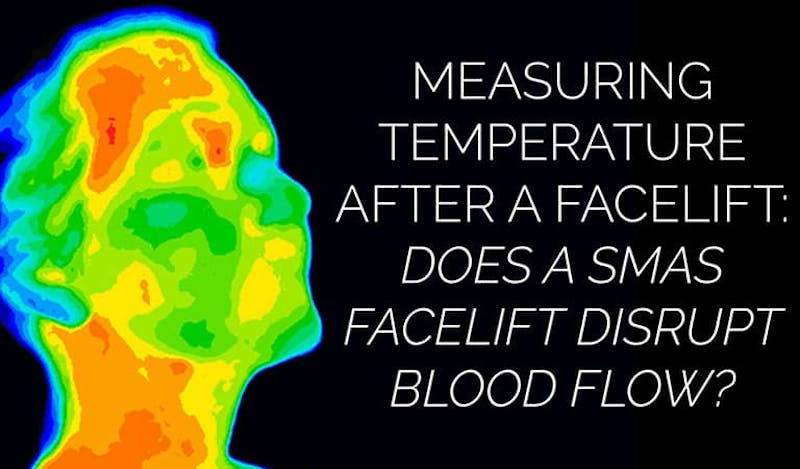
Posted by Dr. Anil R. Shah
So there was an interesting paper that came out on March of 2022 in the International Journal of Environmental Research and Public Health*. And essentially, what they did is they used thermography, which is kind of like a way of detecting heat and heat being released, as a method of measuring recovery after facelift surgery. What they found was that the patient’s baseline of temperature was increased, then decreased after facelift surgery, and started to increase again at week three and up to up to week six.
Now, you might look at this and they were trying to use this as a measure of inflammation. I’m looking at this as a measure of blood flow. And so inflammation is multifactorial. One of the causes of inflammation in the face is the failure for the venous outflow in lymphatics to remove some of the extra fluid in the face, which can lead to edema. But that’s usually an outflow problem. The inflow problem is usually reduced because those are the blood vessels that are going to the face.
In this study, they didn’t talk about whether this was a deep plane facelift but they said it was a SMAS technique. So to me, this kind of talks about a couple things. SMAS techniques tend to be more vascularly disruptive. You have to kind of sever blood vessels to kind of lift up this SMAS flap. Deep plane techniques tend to be more vascular. Even though they’re deeper in the face, it tends to be more of an embryologic gliding plane and tends to be a vascular, less blood vessels there. So to me, it’s not surprising that these patients have less blood flow there, hence colder temperatures after this SMAS technique.
What I would love to see is IR (infrared) thermography of a patient after a deep plane facelift. And then see how this compares to a patient with a SMAS technique. My prediction would be that there would be little to no disruption of the blood flow in this area. And that’s why patients have less swelling because there’s little to less disruption of the lymphatics and venous outflow. So, my thought process here is in this paper, they found that there were decreased temperatures because the inflow or the blood flow, the artery supply was decreased. And then the outflow leads to persistent edema. In a deep plane technique, you’re trying to preserve both the inflow and the outflow, so that you probably have similar baseline techniques. You wouldn’t have that temperature drop off. Interesting to me, probably not really interesting to anyone else.

